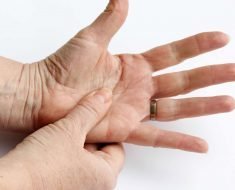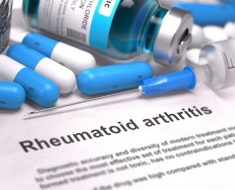
Whenever a vaccine for the coronavirus becomes available, one thing is virtually certain: There won’t be enough to go around. That means there will be rationing.
Someone will have to decide which of the world’s 7.8 billion people gets first crack at returning to a more normal life. Infectious disease experts and medical ethicists say this exceptionally complex decision must weigh not only who is most at risk from the virus and who is most likely to spread it, but also who is most important for maintaining the medical and financial health of a nation as well as its safety.
This pandemic has also added a new quandary: how to address the fact that people of color have suffered higher rates of serious illness and death than white people.
“It’s going to be very, very hard,” Harald Schmidt, a University of Pennsylvania bioethicist, said of the priority-setting process. There will likely be more than one type of vaccine. One may work better in certain groups, say, older adults, than another.
“We don’t only have to make this decision once, but multiple times for multiple vaccines,” Schmidt said. “They won’t all be there at the same time, and they will have different profiles.”
Arthur Caplan, a bioethicist at New York University, said the rush to bring vaccines to market likely will leave many questions unanswered at first about how well they work in different groups. He sees the first public doses as an extension of clinical trials. That will require careful tracking of recipients. “We keep acting as if the race to get FDA approval is the end of things,” he said. “I would say it’s just the start.”
Vaccine development has been moving at lightning speed, and a handful of candidates have had promising results. Experts say the best-case scenario is that a vaccine could be available to the public by the first quarter of 2021.
Traditionally, the U.S. Centers for Disease Control and Prevention’s Advisory Committee on Immunization Practices (ACIP) recommends who should get vaccines, and it has been discussing since April how to divvy up a new coronavirus shot. It is unclear whether officials from the Trump administration’s Operation Warp Speed on vaccine development will want in on the decision as well. “It’s a black box,” said Paul Offit, a vaccine expert at Children’s Hospital of Philadelphia. He thinks Warp Speed will probably focus on distribution. The National Academy of Medicine, at the behest of the National Institutes of Health, has also created an expert panel to study the issue.
At the panel’s first meeting on Friday, Victor Dzau, the academy’s president, said he expected final recommendations by late September to early October. CDC Director Robert Redfield stressed that it was important for Americans to see vaccine allocation as “equitable, fair, and transparent.”
National Institutes of Health Director Francis Collins, who has faced some criticism for potentially adding to decision-making confusion, said this issue is so thorny, we can benefit from extra “deep thinkers.”
“This is going to be controversial,” he said. “Not everybody is going to like the answer.”
Caplan favors an independent commission that includes both scientists and representatives of affected communities, such as people with disabilities and children. Whoever makes the decisions, he said, “it’s got to be trustworthy.”
Eddy Bresnitz, a former deputy commissioner of the New Jersey Department of Health who is now advising the department on coronavirus response, said he expects that the White House Coronavirus Task Force will also weigh in, but that the ultimate decision will rest with officials at the U.S. Department of Health and Human Services.
The federal government is purchasing vaccines and will allocate them to states, said Bresnitz. States usually have some flexibility in interpreting federal guidance. New Jersey already is planning how the vaccine will be distributed, but that will depend on how many doses are available and characteristics of the vaccine itself.
Nate Wardle, a spokesperson for the Pennsylvania Department of Health, said the commonwealth is preparing to give vaccines to the public and high-risk groups in a variety of settings, including doctors’ offices, pharmacies, and other community distribution points that will “ensure the entire population gets the coronavirus vaccination.”
Priorities need to consider the multiple public health roles vaccines can play, said William Schaffner, an infectious diseases specialist at Vanderbilt University Medical Center. Typically, younger people mount the strongest immune response, said Schaffner, who represents the National Foundation for Infectious Diseases as a liaison to ACIP. They are currently catching COVID-19 at higher rates and spreading it to other, more vulnerable populations. Vaccinating them could weaken the chain of transmission.
Older people and those with chronic health problems are clearly getting sickest, but vaccines tend to be less effective in these groups. A third group are “the people in society that are responsible for its most essential functions,” Schaffner said: medical workers, police and firefighters, those who make, sell and distribute food.
Schaffner said it’s important not to create such narrow categories that vaccine sits unused in refrigerators. “Vaccine does not prevent disease,” he said. “Immunization prevents disease.”
During the H1N1 influenza pandemic in 2009, ACIP developed a five-tiered priority list for vaccine distribution that frames the current discussion. First came critical health care and public health personnel, pharmacists, emergency responders, police and firefighters, along with “deployed personnel.” The second tier included essential military support, the National Guard, intelligence services and other national security personnel as well as mortuary workers, and those in communications, IT and utilities. High-risk adults were in the fourth tier and healthy adults, aged 19 to 64 were in the last group.
Children were a high priority in that plan, because H1N1 hit them harder. They will be a lower priority this time, Schaffner said, because they are not involved in current vaccine trials. In addition, young children seem to be less likely to spread the virus than older children or adults. Older children rarely develop serious complications. Pregnant women, however, could remain a high-priority group.
In it’s June meeting, ACIP held preliminary discussions about what new tiers might look like, Schaffner said, keeping in mind that officials will need to know how many doses are available and who responds well to the vaccine. Among those considered for the top tier were high-risk medical, national security and essential workers. Below that might be other health care and essential workers along with people age 65 and older, those who live in long-term care settings and those at high medical risk for severe COVID-19. Those groups include 122 million people.
Future discussions will likely focus on how to slice the various categories.
John Zurlo, an infectious diseases doctor at Jefferson Health, said he would prioritize health care workers most likely to have direct contact with COVID-19 patients and people who live in settings like nursing homes and assisted-living facilities. Low-wage workers with a lot of exposure to the public would also be high on his list, as well as those with conditions like obesity, diabetes and heart disease that raise the risk of hospitalization from COVID-19. The elderly would get priority over the young.
Caplan’s list is similar to Zurlo’s, with a priority tier that includes first responders, health-care workers and nursing home staff and residents, but he would also add representatives of groups that were not well studied in clinical trials. Then he’d start looking at hot spots. Maybe Houston will need the vaccine more than Boise. He’d want to make sure that key foreign locations are under control so travelers don’t reintroduce the virus.
Because Black and Latino people have been more likely to become seriously ill with COVID-19 and to die of it, members of ACIP have discussed whether some racial groups should get preference for the vaccine.
Schmidt says race must be considered. Minority groups are at higher risk in part because they have higher rates of chronic medical problems, but socioeconomic conditions like crowded homes, low-wage jobs without sick leave and the need to take public transportation make things worse. Black and brown workers also often toil in essential businesses like hospitals, nursing homes and grocery stores.
“We have to understand that social justice will loom large in allocating vaccine,” the Penn bioethicist said. While legally, governments could not prioritize by race, they could by “social deprivation,” a measure that combines income, education, employment, and housing-quality data to rank neighborhoods.
It’s clear, he said, that the vaccine should not be dispensed on a first-come-first-served basis. That would help the “well connected and better off.”
Schaffner thinks that prioritizing essential workers and those with risk factors will benefit nonwhite Americans. “I don’t like vaccine allocation by race,” he said. “I think doing it by risk is much the better method.”
Should political leaders jump the line? Bresnitz thinks that should be on the table. “We don’t want our leadership to be decimated,” he said. One could make a case, he said, that career government workers may sometimes be more important than elected officials.
Caplan said we can assume that not everyone will follow the rules. There will inevitably be a black market. “There will be people buying access,” he said. “This is America.”
It’s a safe bet that no one, save possibly those critical health care workers, will be completely satisfied with the eventual rationing scheme.
Source: Read Full Article





